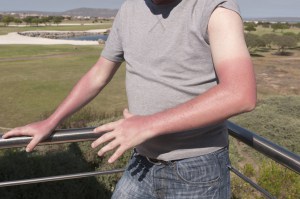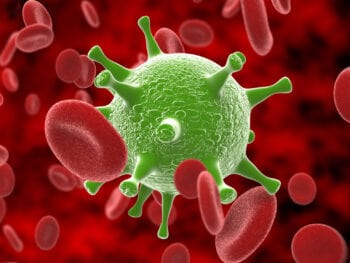
Skin cancer is by far the most common type of cancer. Anyone can get skin cancer, regardless of skin color.
What is Skin Cancer?
Skin cancer develops when skin cells are irreversibly damaged and begin to grow and divide uncontrollably. Skin cancer can spread and cause destruction of nearby healthy tissue as well as to other parts of the body.
Leading Causes
Sun exposure and indoor tanning are leading causes of skin cancer. Increased likelihood to develop skin cancer is attributed to sun exposure time, frequency and intensity. Even laying out during the summers years ago increases one’s lifetime risk.
Prevention
Never use a tanning bed or sun lamp. Research shows that using a tanning bed increases your risk of getting the most lethal type of skin cancer (Melanoma) by 75%.
Limit exposure time. Whenever possible, limit time outside when the sun is strongest (between 10 a.m. and 2 p.m.).
Use sunscreen and lip balm. Every day, apply sunscreen to all skin that will be exposed to the sun (face, ears, hands, neck, etc.). Use only products with labels that say UVA/UVB or broad-spectrum protection and provide sun protection factor (SPF) of at least 30.
Utilize sunglasses. Make wearing sunglasses with ultra violet ray protection part of your daily routine. Skin cancer (Melanoma type) can develop in the eyes.
Proper clothing choice is important. Clothing can protect you from the harmful ultra violet rays of the sun. As a general rule, clothing that you can see through when held up to bright light does not protect well against UV rays. Additional UV protection can be added to clothing.
Screening
An early detection of skin cancer can save your life.
Self-exams are critical. It is important to know what existing moles or other skin lesions (abnormal growths) look like and be able to identify when there are changes or recognize when new ones originate.
Meet with a dermatologist. Schedule an appointment for an examination with a dermatologist if you have any of the warning signs of skin cancer.
Warning Signs
Melanoma is the most lethal type of skin cancer. Look for the important “ABCD” warning signs:
A – Asymmetry
B – Border irregularity
C – Color variations
D – Diameter larger than a pencil eraser
NOTE: melanoma can, at times, be smaller than a pencil eraser.
If you have questions or concerns about skin cancer, schedule an appointment with your physician or contact the National Cancer Information Center.
Author Gregg Cognac, PA-C, Clinical Affairs Director, Medcor is a certified Physician Assistant, and works with Medcor’s medical directors to provide oversight and support for on-site clinic staff in more than 170 locations nationwide. Gregg earned his degree in PA studies from Midwest University in 1999, then completed post-graduate training in Emergency Medicine culminating in a Master’s degree. Gregg’s clinical experienced has been in Emergency Medicine, Occupational Medicine and Cardiology. Gregg contributes to policy and service development, QA, training, and other clinical support for clinic staff operating in a wide range of industries. http://medcor.com. Contact: gregg.cognac@medcor.com











